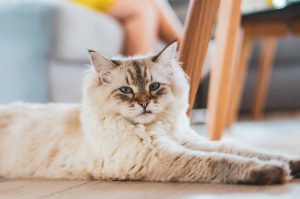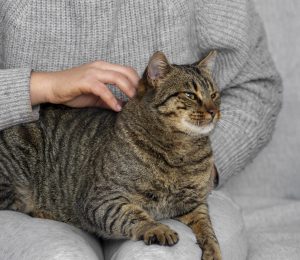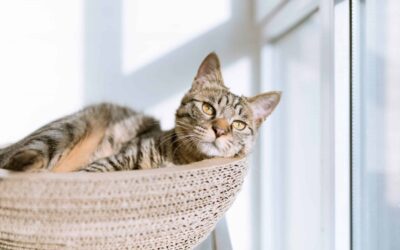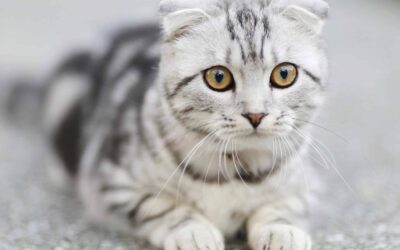How to Care For A Senior Cat: Your Complete Guide

Understanding the Aging Process in Cats
As cats age, they undergo a gradual process of aging that can bring about various physical and behavioral changes. Typically, cats are considered “senior” once they reach around 11-12 years of age, though the exact age can vary depending on the individual cat’s breed, size, and overall health.
As cats enter their senior years, they may experience a decline in their senses, mobility, and cognitive function. Their metabolism may slow down, leading to weight changes, and they may become more susceptible to certain health conditions, such as arthritis, kidney disease, and cognitive decline. Understanding the aging process in cats is crucial for providing them with the care and support they need to thrive during their golden years.
15 Essential Ways to Care For A Senior Cat
1. Nutrition and Diet for Senior Cats
As cats age, their nutritional needs may change. Senior cats often require a diet tailored to their specific needs, such as one that is lower in protein and higher in fiber to support kidney health or one supplemented with joint-supporting nutrients like glucosamine and chondroitin. Work closely with your veterinarian to determine the best diet for your senior cat and gradually transition them to a new food if necessary.
- Discuss your cat’s dietary needs with your veterinarian and choose a high-quality, senior-specific cat food.
- Provide small, frequent meals to help maintain a healthy weight and prevent digestive issues.
- Ensure your cat has access to clean, fresh water at all times to support hydration
2. Veterinary Care for Senior Cats
Regular veterinary checkups are essential for senior cats, as they are more prone to developing various health conditions. Your veterinarian can perform comprehensive physical examinations, diagnostic tests, and preventive care to identify and manage any issues early on. This may include blood work, dental cleanings, and discussions about pain management or other treatments.
- Schedule biannual veterinary visits for your senior cat to monitor their health.
- Work with your vet to develop a customized care plan that addresses your cat’s specific needs.
- Be proactive about any changes in your cat’s behavior or physical condition and discuss them with your veterinarian
3. Exercise and Enrichment for Senior Cats
While senior cats may not be as active as their younger counterparts, they still need regular exercise and mental stimulation to maintain their overall well-being. Gentle playtime, interactive toys, and environmental enrichment can help engage your senior cat physically and mentally.
- Encourage low-impact exercises like short play sessions with wand toys or laser pointers.
- Provide puzzle feeders, treat-dispensing toys, and other interactive enrichment to stimulate your cat’s mind.
- Ensure your senior cat has comfortable resting spots throughout the home to encourage relaxation and rest.
4. Creating a Senior-Friendly Environment
Making adjustments to your home environment can greatly improve the quality of life for your senior cat. This may include providing easy access to resources, minimizing obstacles, and ensuring a comfortable, safe, and stress-free living space.
- Install pet stairs or ramps to help your cat access favorite perches or elevated areas.
- Ensure your cat’s food, water, and litter box are easily accessible and located in quiet, low-traffic areas.
- Maintain a consistent routine and minimize changes to your cat’s environment to reduce stress.
5. Managing Senior Cat Behavior
As cats age, they may experience changes in their behavior, such as increased vocalization, decreased activity, or altered sleeping patterns. Understanding and addressing these behavioral changes can help you provide the best possible care for your senior cat.
- Recognize and address any changes in your cat’s behavior, such as increased vocalization or decreased activity levels.
- Consult with your veterinarian to rule out any underlying medical conditions that may be contributing to behavioral changes.
- Implement environmental adjustments and positive reinforcement training to help manage any behavioral challenges.
6. Grooming and Hygiene for Senior Cats
Maintaining good grooming and hygiene practices is essential for senior cats, as they may have difficulty self-grooming due to age-related changes or physical limitations. Regular brushing, nail trims, and gentle cleaning can help keep your cat comfortable and prevent issues like matted fur or overgrown nails.
- Brush your senior cat regularly to remove loose hair and prevent hairballs.
- Trim your cat’s nails every 4-6 weeks to prevent overgrowth and discomfort.
- Gently clean your cat’s ears and eyes as needed to prevent infections or irritation.
7. Providing Comfort and Pain Management
Senior cats may experience age-related discomfort or pain, such as from arthritis or other chronic conditions. Implementing strategies to provide comfort and manage pain can significantly improve your cat’s quality of life.
- Discuss pain management options with your veterinarian, such as medications, supplements, or alternative therapies.
- Provide your cat with soft, orthopedic bedding and ensure they have easy access to their resources.
- Consider using heated or elevated feeding and water bowls to make it easier for your cat to access their food and water.
8. Environmental Enrichment for Senior Cats
Providing a stimulating and engaging environment can help keep your senior cat mentally and physically active. This may include interactive toys, scratching posts, and vertical spaces for climbing and perching.
- Encourage your cat’s natural behaviors by providing scratching posts, cat trees, and window perches.
- Rotate a variety of toys to keep your senior cat interested and engaged.
- Consider setting up “cat-friendly” areas with cozy beds, hiding spots, and elevated resting platforms.
9. Hydration and Water Intake for Senior Cats
Maintaining proper hydration is crucial for senior cats, as they may be more susceptible to dehydration due to age-related changes in their kidneys or other health conditions. Ensuring your cat has access to clean, fresh water at all times can help support their overall well-being.
- Provide multiple water bowls throughout your home to encourage your cat to drink.
- Consider using a pet water fountain to keep the water circulating and appealing to your cat.
- Monitor your cat’s water intake and consult your veterinarian if you notice any changes in their hydration levels.
10. Dental Care for Senior Cats
Dental health is an important aspect of senior cat care. As cats age, they may be more prone to dental issues like gum disease or tooth loss. Regular veterinary dental cleanings and at-home dental care can help prevent these problems and keep your cat comfortable.
- Schedule regular dental cleanings with your veterinarian to maintain your cat’s oral health.
- Brush your cat’s teeth at home using a soft-bristled toothbrush and pet-safe toothpaste.
- Provide dental-friendly treats and chews to help keep your cat’s teeth and gums healthy.
11. Managing Cognitive Decline in Senior Cats
Some senior cats may experience age-related cognitive decline, which can manifest in various behavioral changes, such as disorientation, decreased activity, or changes in sleep-wake cycles. Recognizing and addressing these changes can help improve your cat’s quality of life.
- Consult your veterinarian to rule out any underlying medical conditions and discuss treatment options for cognitive decline.
- Maintain a consistent routine and environment to help reduce stress and confusion for your senior cat.
- Provide mental stimulation through interactive toys, food puzzles, and positive reinforcement training.
12. Dealing with Mobility Challenges
As cats age, they may experience a decline in their mobility and physical abilities, making it more difficult for them to move around and access their resources. Addressing these mobility challenges can help keep your senior cat comfortable and independent.
- Install pet stairs or ramps to help your cat access favorite perches or elevated areas.
- Provide soft, orthopedic bedding in your cat’s resting areas to support their joints.
- Consider assistive devices, such as harnesses or mobility aids, to help your cat move around more easily.
13. Social Interaction and Mental Well-being
Maintaining social interaction and mental stimulation is crucial for the overall well-being of senior cats. Engaging your cat in positive interactions and providing them with enriching activities can help support their cognitive function and emotional health.
- Spend quality time with your senior cat through gentle petting, grooming, and positive reinforcement training.
- Provide interactive toys, food puzzles, and other enrichment activities to keep your cat’s mind active.
- Ensure your senior cat has a quiet, comfortable space to retreat to when they need rest and relaxation.
14. Recognizing Signs of Pain and Discomfort
Identifying and addressing signs of pain or discomfort in senior cats is essential for their overall well-being. Cats may not always show obvious signs of pain, so it’s important to be observant and work closely with your veterinarian.
- Watch for changes in your cat’s behavior, such as decreased activity, reluctance to jump, or altered sleeping patterns.
- Look for physical signs of pain, such as limping, favoring one side, or sensitivity to touch.
- Consult your veterinarian if you notice any changes in your cat’s behavior or physical condition.
15. Traveling and Senior Cat Care
Traveling with a senior cat can present unique challenges, but with proper planning and preparation, it can be a positive experience for both you and your feline companion.
- Ensure your cat’s travel carrier is comfortable and secure, and introduce it to them gradually before your trip.
- Pack your cat’s familiar items, such as their bedding, toys, and food, to help reduce stress during the journey.
- Consult your veterinarian about any necessary precautions or medications to make your cat’s travel as smooth as possible.
Can Odie Pet Insurance Help You in Taking Care of Your Senior Cat?
Depending on the specific pet insurance policy terms and when the plan became effective, pet insurance can cover the diagnosis, treatment, and management of diseases in senior cats.
Reimbursement
This method is the most common for pet insurance companies. You pay out of pocket for the veterinarian bill, and then the insurance company reimburses you for what’s covered under the insurance plan. The steps look like this.
- You pay the vet bill after your cat’s visit.
- You fill out the pet insurance claim form.
- Submit the claim form and other required documentation to the insurer.
- After the claim is approved, you will be reimbursed for eligible expenses.
What Does Odie Pet Insurance Cover?
Pet insurance covers various veterinary expenses, providing financial protection and peace of mind for pet owners. Here are the details of the coverage options offered by Odie Pet Insurance:
Illness & Injury Plan
The Illness & Injury Plan is an all-inclusive insurance plan designed to cover a wide range of medical needs for your pet. This plan includes comprehensive coverage for various illnesses, injuries, and veterinary services. Some of the covered items include:
- Veterinary exams and consultations
- Diagnostics (e.g., X-rays, lab tests)
- Prescribed medications
- Surgeries and hospitalization
- Rehabilitation, acupuncture, or chiropractic treatments
- Medically necessary supplies
- Euthanasia and cremation
The Wellness Plan
The Wellness Plan is a monthly membership that focuses on preventive care and covers routine veterinary services.
- Provides reimbursements for routine care items such as wellness visits (exams and vaccines), testing and parasite prevention, dental cleanings and at-home dental care, vitamins, supplements, and more.
- Through Odie’s partnership with Petivity, a leader in smart pet products and proactive care, Wellness Plan members can also receive reimbursements for Petivity devices and health kits, as well as eligible Purina food and supplements.
- Total reimbursement up to $700 per year.





